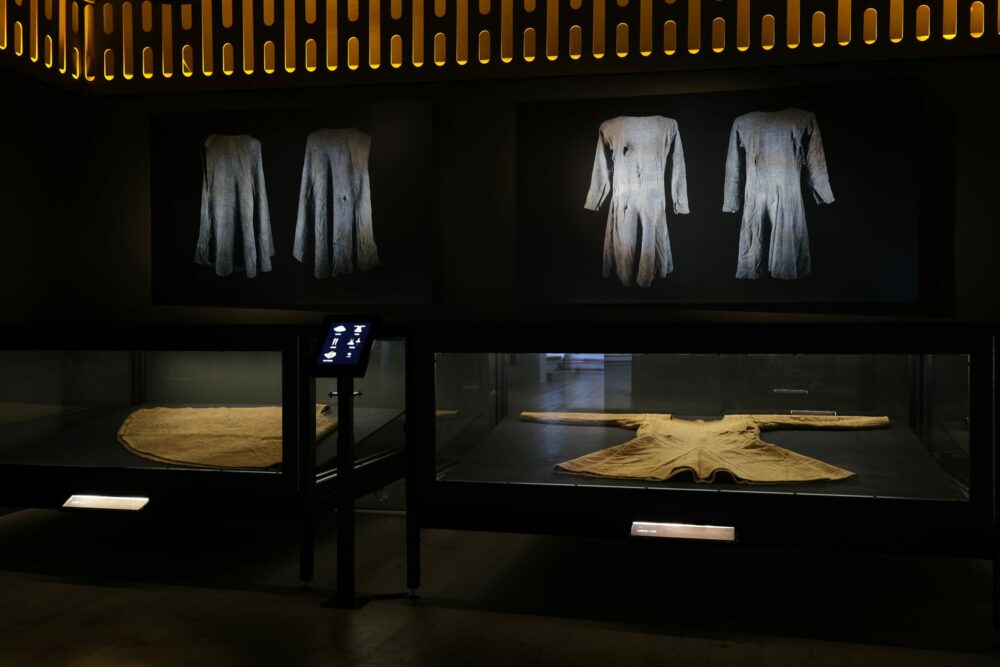4. The Bocksten Man’s clothes
The wool garments the Bocksten Man was found in had been preserved astonishingly well in the peat bog. The glass cases in this room contain the actual clothes he was buried in. When the corpse was found, however, his clothes had fallen apart, as their seams had disintegrated. The thread that had kept the garments together had been made of linen and had rotted away. But when the separate bits of fabric were cleaned, it turned out you could still see where the maker’s needle had pierced the cloth. These puncture holes were used to sew the outfit back together again. The photos above the cases show what the Bocksten Man’s clothes looked like when they were reassembled in 1936.
The garments are believed to have been made some time between 1350 and 1370, which makes this one of the best preserved medieval outfits in all of Europe.
To the far left, there’s the man’s cloak or mantle. It had an opening on the right-hand side to give the man easy use of his right arm.
Underneath this mantle, the man wore a tunic – a kind of long shirt – which is displayed in the next case. It was tied together with a leather belt, in which the Bocksten Man carried two knives. Both his belt and knives are laid out in a smaller case.
The most noteworthy item of clothing, however, is the so-called gugel, which is displayed alongside the tunic. The gugel served as both a cap and a scarf. Its length was subject to fashion trends and varied over the ages. The same case also contains the man’s hose: long wool socks he wore instead of trousers. They were held up with leather straps hooked onto an inner belt that was worn under the tunic.
The smaller cases also display the Bocksten Man’s leather shoes and the footwraps he wore inside his shoes. Footwraps were made from old wool garments. Once clothes had been worn out, they were cut into smaller pieces to wrap around the feet and keep them warm.
The Bocksten Man’s wool clothes aren’t light enough to be summer wear and he would have worn sturdier shoes in winter, which suggests the man must have died in spring or autumn.
While his clothes don’t tell us who the Bocksten Man was or what his profession was, they do let us draw some conclusions. The width and quality of the wool, for example, indicate that it was handwoven. Had the Bocksten Man been part of the upper classes, he probably would have preferred finer, imported fabrics made in specialist workshops in continental Europe.

